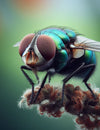
Brief Overview of the Importance of Termite Control
Termites, often referred to as "silent destroyers," are small but mighty insects that pose a significant threat to homes and structures. These voracious pests feed on cellulose-based materials, such as wood, and can cause extensive damage to the structural integrity of buildings. Despite their size, termite colonies operate stealthily, making it crucial for homeowners to prioritize termite control.
Common Chemicals Used in Termite Control
Termite control relies on a variety of chemicals designed to eradicate or deter these destructive pests. Understanding the key chemicals involved is crucial for homeowners and pest control professionals alike. Here's an exploration of some common chemicals used in termite control, along with their identification and explanations:
1. Chlorpyrifos:
-
Identification: Chlorpyrifos is an organophosphate insecticide commonly used in termite control.
- Explanation: It works by disrupting the nervous system of termites, leading to paralysis and eventual death. While effective, chlorpyrifos has faced increased scrutiny due to its potential impact on human health and the environment.
2. Bifenthrin:
-
Identification: Bifenthrin belongs to the pyrethroid class of insecticides and is widely used in liquid termiticides.
- Explanation: This chemical acts on the nervous system of termites, causing hyperexcitation and eventual paralysis. Bifenthrin is valued for its residual effectiveness, providing long-lasting protection against termite infestations.
3. Fipronil:
-
Identification: Fipronil is a phenylpyrazole insecticide and is commonly found in termite baiting systems.
- Explanation: It disrupts the central nervous system of termites by blocking the passage of chloride ions, leading to paralysis and death. Fipronil is often used in bait formulations, offering a targeted approach to termite control.
4. Imidacloprid:
-
Identification: Imidacloprid is a neonicotinoid insecticide frequently used in liquid termiticides and termite baiting systems.
- Explanation: It acts on the nervous system of termites by binding to specific receptors, causing disruption and subsequent death. Imidacloprid is known for its systemic properties, allowing it to be absorbed by wood to create a protective barrier.
5. Hexaflumuron:
-
Identification: Hexaflumuron is an insect growth regulator (IGR) commonly used in termite baiting systems.
- Explanation: Rather than causing immediate death, hexaflumuron disrupts the molting process of termites, inhibiting their ability to develop and reproduce. This IGR is valued for its ability to control termite populations over time.
6. Borates:
-
Identification: Borates are naturally occurring compounds used as wood preservatives in termite control.
- Explanation: Borates work by disrupting the termite's digestive system, ultimately leading to starvation. These compounds are often applied to wood or incorporated into building materials to create a long-lasting deterrent against termite infestations.
It's important to note that the use of these chemicals should be approached with caution, considering their potential impact on human health and the environment. Additionally, regulatory guidelines and safety precautions should be followed to ensure responsible and effective termite control practices. When in doubt, seeking professional advice is recommended for safe and informed termite management.
Side Effects of Termite Spray & Chemicals
Is Termite Treatment Harmful to Humans?
When it comes to termite treatment, one of the primary concerns for homeowners revolves around the potential harm these chemicals may pose to human health. While the goal is to eliminate termite infestations and protect structures, it's essential to be aware of the potential side effects associated with termite sprays and chemicals. Here's a closer look at whether termite treatment is harmful to humans:
1. Exposure Risks:
-
Termite treatments involve the application of potent chemicals in and around homes. Direct exposure during application or lingering residues can pose risks to humans. Skin contact, inhalation, or accidental ingestion are potential routes of exposure.
2. Respiratory Issues:
-
Some termite control chemicals, when inhaled, may lead to respiratory problems. Individuals with pre-existing respiratory conditions such as asthma may be particularly sensitive to the fumes emitted during and after treatment.
3. Skin Irritation:
-
Skin contact with certain termite control chemicals can cause irritation, redness, or allergic reactions. It is essential to use protective clothing and follow safety guidelines to minimize the risk of skin exposure.
4. Eye Irritation:
-
Contact with the eyes can result in irritation or more severe eye-related issues. Proper protective gear, such as goggles, is crucial during termite treatment application to prevent accidental exposure to the eyes.
5. Ingestion Concerns:
-
Ingesting termite control chemicals, whether accidentally or through contaminated food or water, can lead to serious health issues. It is imperative to follow safety precautions, especially in homes with children or pets.
6. Long-Term Health Effects:
-
Prolonged exposure to certain termite control chemicals may contribute to long-term health effects. Research is ongoing to better understand the potential cumulative impact on human health over extended periods.
7. Vulnerability of Children and Pets:
-
Children and pets may be more susceptible to the effects of termite control chemicals due to their smaller size and developing physiology. Extra caution is necessary to ensure their safety during and after treatment.
Eco-Friendly Ways to Control Termites
As environmental awareness grows, there is a rising demand for termite control methods that are not only effective but also eco-friendly. Traditional termite treatments often involve the use of chemical pesticides, but there are alternative approaches that prioritize sustainability and minimize the impact on the environment. Here are some eco-friendly ways to control termites:
1. Nematodes:
-
Description: Nematodes are microscopic roundworms that are natural predators of termites.
- How It Works: When applied to the soil, nematodes seek out termite larvae and release bacteria that are lethal to them. This method is specific to termites and does not harm plants, animals, or humans.
2. Beneficial Nematodes:
-
Description: Similar to nematodes, beneficial nematodes are used in organic farming and gardening.
- How It Works: These nematodes attack termite larvae, disrupting the termite life cycle. They are safe for plants, making them an eco-friendly option for termite control in gardens.
3. Boric Acid:
-
Description: Boric acid is a natural compound derived from boron, a mineral.
- How It Works: When termites come into contact with boric acid, it disrupts their digestive system and eventually leads to their demise. Boric acid is low in toxicity to humans and pets when used correctly.
4. Orange Oil:
-
Description: Orange oil is an extract from orange peels, and it contains a compound called d-limonene.
- How It Works: Orange oil is known for its termicidal properties. It can be injected into termite galleries, causing their membranes to break down. Orange oil is considered safe for the environment and is a renewable resource.
5. Diatomaceous Earth:
-
Description: Diatomaceous earth is a fine powder made from fossilized algae.
- How It Works: When termites come into contact with diatomaceous earth, the powder absorbs the oils and fats from their exoskeleton, causing them to dehydrate. It is a non-toxic substance for humans and pets.
6. Cardboard Traps:
-
Description: Cardboard traps are simple, biodegradable traps made from corrugated cardboard.
- How It Works: Termites are attracted to the cellulose in cardboard. Placing these traps strategically around your property can divert termites away from wooden structures. Once infested, the cardboard can be removed and replaced.
7. Microwave and Heat Treatments:
-
Description: Microwave and heat treatments involve raising the temperature in localized areas to lethal levels for termites.
- How It Works: These methods use heat to kill termites without the need for chemical applications. They are effective for localized infestations and are considered environmentally friendly.
8. Natural Termite Barriers:
- Description: Creating natural barriers using materials like sand or crushed rock around the perimeter of a property.
- How It Works: These barriers deter termites by creating unfavorable conditions for tunneling. While not a direct control method, they contribute to a protective barrier against termite intrusion.
Implementing eco-friendly termite control methods not only helps protect the environment but also promotes sustainable and responsible pest management practices. When considering these alternatives, it's essential to assess the specific needs of your property and the extent of the termite infestation, seeking professional advice if necessary.




I effected badly from Victoria max
Feeling headache dizziness need your help please advise in your earliest.
Regards